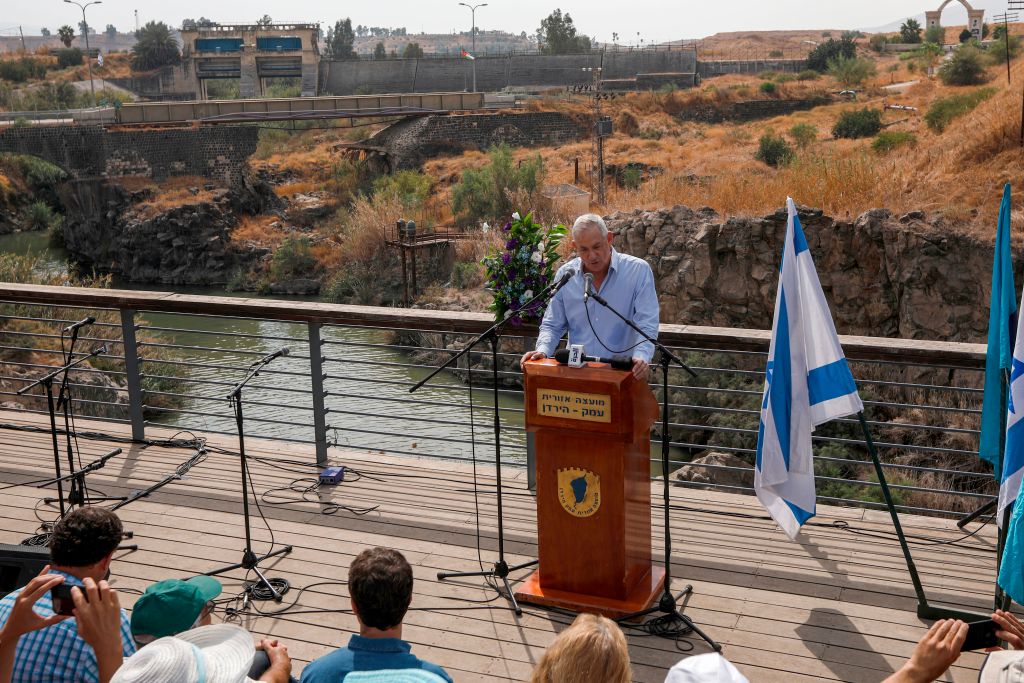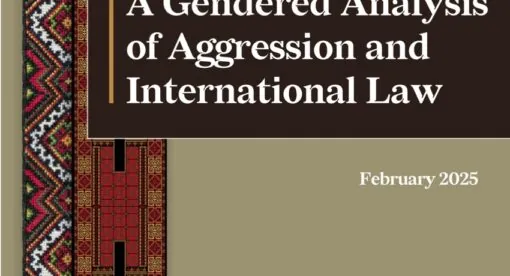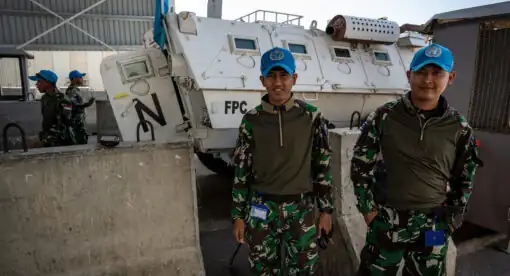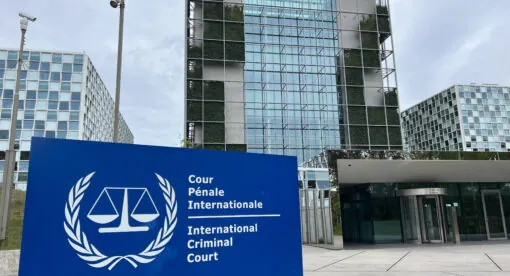Climate diplomacy is strengthening ties between Israel and Jordan, with the two nations collaborating on rehabilitating the River Jordan and exchanging resources through the water-energy deal. Shared ground and surface water in the Levant, which is drying up with dwindling rainfall and scorching temperatures, has been simultaneously a source of torment and a catalyst for diplomacy in the Israeli-Jordanian relationship. However, as Prime Minister Benjamin Netanyahu returns to power in Israel, these climate collaborations are serving to embolden the Israeli occupation, which remains unflinching in its denial of water rights to Palestinians.
Although Palestinians were absent from COP27’s two main Israeli-Jordanian climate initiatives, the deals come with significant implications for Palestinian communities, particularly those living in the occupied West Bank beside the Jordan River. These initiatives’ recognition of Israel’s water hegemony conforms with the Oslo Accords, which led to inequities in the control and division of water resources. Further, the Western tendency to treat Jordan as a stand-in for Palestinian leadership in these climate initiatives is part of a pattern of behavior that points to the West having abandoned the two-state solution in all but rhetoric.
Sovereignty over natural resources is a key condition of modern statehood. As American diplomats and their international counterparts applaud these climate initiatives, they explicitly recognize Israeli control over Palestinian resources and territory for the foreseeable future. These climate initiatives are urgently needed in one of the driest regions on earth, but they should be brought into alignment with a larger diplomatic vision. If the Biden administration truly aims to continue pursuing the two-state solution, U.S. diplomats should lobby for revisions to the inequitable water agreements that perpetuate Israel’s environmental occupation and deny Palestinians environmental rights.
For many Palestinian communities in the occupied West Bank, the status quo is unbearable. Palestinian leaders point to the difference in water availability in Palestinian villages and Israeli settlements, with Palestinian taps running dry while Israeli gardens on West Bank settlements flourish. Weeks-long periods spent without water have led Palestinian factories to shut down, farms to fall barren, and animals to die of thirst, placing the economy in a chokehold.
Israel-Jordan Environmental Relations
Water access has long been both a unifier and a source of tension in Israel and Jordan’s relationship, beginning with their peace agreement in 1994. Annex II of the Israeli-Jordanian peace treaty covers the Yarmouk River, the Jordan River, and groundwater from aquifers. Israel uses the most water from the Jordan River basin, withdrawing up to 640 million cubic meters (mcm) annually, of which 55 mcm goes to Jordan in accordance with the treaty. In addition to the 55 mcm of water coming from Israel, Jordan uses about 290 mcm per year from the Jordan River basin. (For reference, Jordan’s total water use including domestic, agriculture, and industry totaled 1,054 mcm in 2017.) Syria also uses about 450 mcm of water per year from the basin. The Israeli-Jordanian treaty also outlines a plan for Jordan to store water in Israeli territory, in addition to the establishment of a Joint Water Committee.
Notably, this treaty failed to specify water-sharing arrangements during droughts and left out the precise quantity of water that Israel would provide to Jordan, stating that “Jordan gets the rest of the flow” from the Yarmouk River after Israel takes its set amount. Climate change will likely render these ambiguities painful as water dries up in the region.
There are credible fears that Netanyahu’s new government will view water as a political tool. Israel already has resource leverage over Jordan, stemming from a gas pipeline that runs between the two countries. While out of office, Netanyahu argued for leveraging Israel’s water to get political concessions from Jordan. And during his previous term as prime minister, Netanyahu delayed the supply of 3 mcm of water to Jordan after an escalation in political tensions between the two countries.
Jordan is operating from a place of desperation, lacking sufficient desalination capacity and running dangerously low on water. Massive influxes of refugees have resulted in a population surge, with Jordan continuing to host the second highest number of refugees per capita. Its population growth, combined with reduced rainfall due to climate change, has placed further strain on Jordan’s already insufficient resources, pushing Jordanian leaders to look for new solutions.
In contrast to Jordan, Israel’s technological advancement has made it a global leader in desalination, enabling the small nation to convert salty water into drinkable water. Eighty-five percent of Israel’s drinking water supply now comes from desalinated seawater and brackish groundwater, provided by five desalination plants along its coast.
Growing Climate Diplomacy
Chief among Israeli-Jordanian climate initiatives is the water-for-energy deal, also called the Green-Blue Project Prosperity deal, which would see Israel exchange 200 mcm of its desalinated water each year for 600 megawatts of solar power generated in Jordan, with solar technology supplied by an Emirati firm. Israel’s contribution of water would make up around 20% of Jordan’s total water use, while Jordan’s contribution of power would generate 2% of Israel’s total electricity.
These deals have been overwhelmingly supported by left-leaning coalitions of Israelis. Many of these groups, including the multi-country environmental NGO EcoPeace, have also argued that the water-energy deal should include provisions for water in the Palestinian territories.
Underpinning the resource exchange is the reality that Jordan has available land in its sun-soaked deserts for an expansive solar field and produces solar power at a cheaper rate than Israel. On the other side of the exchange, Israel brings its desalination technology and water conveyance ability, making it affordable to pump water from the Mediterranean and build a new desalination plant to supply water to Jordan. The UAE can facilitate the resource exchange with its solar technology, a feat made possible by the Abraham Accords, which saw bilateral normalization between the Emiratis and the Israelis. Showing U.S. support, Climate Envoy John Kerry attended signings for both the letter of intent and the MOU at COP27.
The water-energy deal intends to be a permanent fixture underpinning the relationship between Israel and Jordan, from both a political and an infrastructure point of view. Cross-border water and energy infrastructure is expensive and takes time. But Jordan has significantly less leverage than neighboring Israel. Israel could likely make up the difference if Jordan shut off the power; Jordan would face a crisis if Israel shut off the water. Reforms to Jordan’s water sector could reduce its future dependence on Israel, but these will require time and investment.
Palestinians and Climate Diplomacy
Israel’s vast control of ground and surface water is a component of its water organization. Israel won control over managing water resources through the Oslo Accords, which established a Joint Water Committee, with equal membership from Israel and the Palestinian Authority, to manage water resources and systems in the occupied West Bank. In addition, the agreements recognized Palestinian water rights and allocated specific water quantities to the Palestinian populations from the Mountain Aquifer. Israel now pumps water from the aquifer and sells a portion back to the Palestinians in excess of the Oslo quota.
Although this arrangement ostensibly is intended to foster trust and resource sharing between Israel and the Palestinian Authority, in reality, Israel now controls 85% of water resources in the West Bank and has a say in how the rest is distributed. The Joint Water Committee has fallen into dysfunction. These dynamics have contributed to drought conditions throughout Palestinian villages. The Palestinian Authority needs Israeli licenses to dig wells in the occupied West Bank to make up for its population’s water deficit, and unauthorized wells and cisterns are routinely destroyed by Israeli forces. During previous droughts, the daily per capita water consumption of Israelis was over 10 times the water consumption of Palestinians.
Strained Relations
The environmental deals come at a time when diplomacy between Israeli, Jordanian, and Palestinian leaders is strained, and violence is surging. As Israel’s government grows more extreme, relations are likely to deteriorate further. In Jordan, the signing of the Letter of Intent for the water-energy exchange with Israel in 2021 led to protests and a parliamentary walkout.
However, compared to other questions plaguing regional diplomacy, water is among the least controversial and most urgent issues, distinguishing it among the final status issues. Looking forward, Amman may aim to renegotiate the larger environmental terms of its agreements with Israel to achieve a more equitable and reliable share of water, particularly considering population changes and water resource developments that have occurred over the two and a half decades since the peace treaty was signed. With Jordan’s population continuing to rise, inequities in water allocation will grow as a source of pain in its relationship with Israel. To meet their rising needs, the Jordanians should simultaneously pursue water reforms that decrease their water dependence.
In the realm of water, both the Jordanians and the Palestinians lack significant leverage over Israel, given the latter’s control over existing resources and technological capabilities. In this context, American pressure on Israel has potential to level the playing field. U.S. diplomats were heavily involved in both the Oslo process and the Israeli-Jordanian peace agreement, which have contributed to the region’s inequitable division of water resources. As communities living in Jordan and the occupied Palestinian territories face the present and future with thirst, U.S. diplomats can now lobby for the revision of these inequitable water sharing arrangements. Israel’s desalination capacity will also lend more flexibility to the renegotiation process, which U.S. diplomats should draw on. This pressure will be critical as Israel’s government grows increasingly hardline.
Further, U.S. support for climate initiatives should simultaneously emphasize Palestinian rights and autonomy over their territory and resources. Simply adding a Palestinian signature to the most recent climate initiatives would be insufficient. Without recognition for Palestinian environmental rights, the token inclusion of Palestinians in climate diplomacy initiatives will do little to establish long term infrastructure for a more peaceful and resource-secure Middle East.
As Netanyahu’s right-wing government retakes power, the likelihood is low of Palestinians gaining their water rights. Instead, these climate diplomacy initiatives appear poised to establish long-term infrastructure, both physical and institutional, that affirms Israeli control over the water resources used by Palestinian communities. The ongoing failure to recognize Palestinian water rights in climate diplomacy initiatives is another nail in the coffin for the two-state solution.
Zoe H. Robbin is a Fulbright research fellow in Jordan where she focuses on climate change, migration, and public policy. She also co-leads the Diplomacy working group of Foreign Policy for America’s NextGen network and is a Senior Fellow with Humanity in Action. She previously worked at Integrated, a local research organization where she conducted research on development programs spanning Jordan, Lebanon, Iraq, and the broader Arab Region. She has consulted for EU, USAID, and other development programs in the region. Her writing has been featured in the Daily Beast, Middle East Eye, the New Arab, and more. Zoe holds dual bachelor’s degrees summa cum laude in Quantitative Sciences and Arabic Studies from Emory University. She speaks French and Arabic. She tweets at @zoe_robbin.
The views expressed in her writings do not represent the views of the Fulbright Program, the U.S. Department of State, or any of its partner organizations.
The views expressed in this article are those of the author and not an official policy or position of the New Lines Institute.






